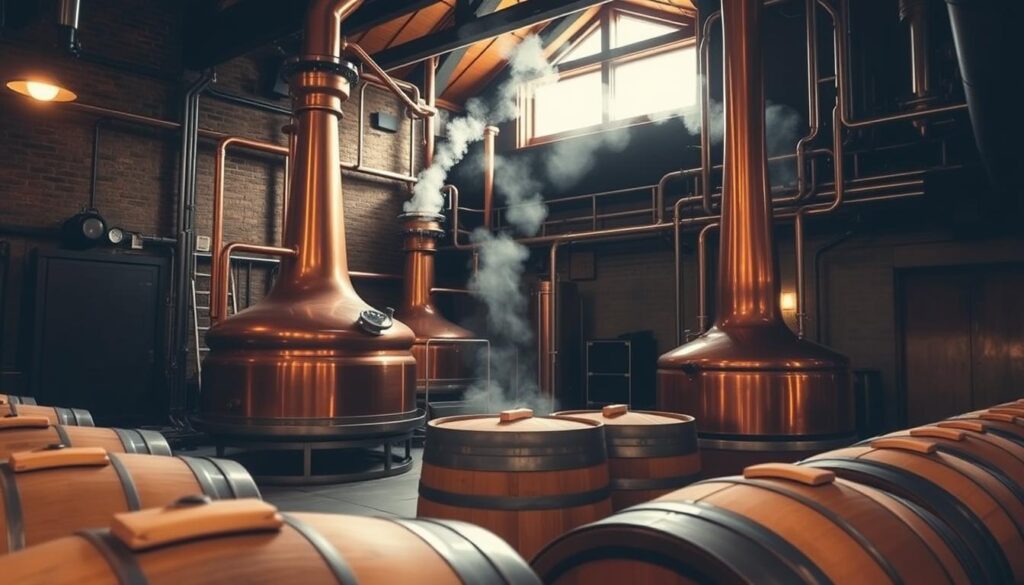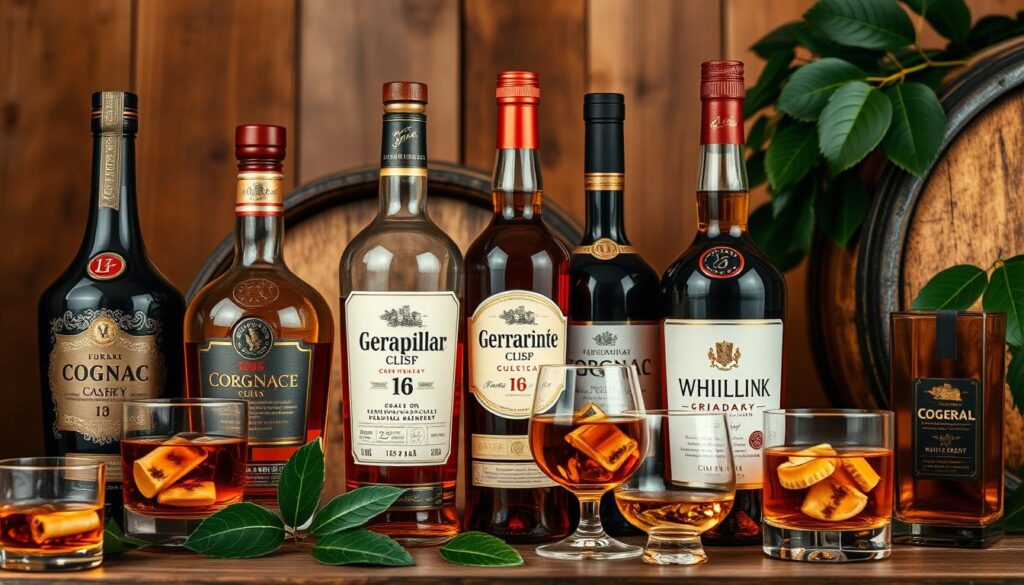Exploring Cognac vs. Whiskey is a fun adventure for spirit enthusiasts. Both are among the world’s most celebrated spirits, with rich histories, complex flavors, and devoted followings.
While both are distilled from natural ingredients, they differ in origin, production methods, and flavor profiles. Whether you prefer the smooth elegance of Cognac or the bold character of whiskey, understanding their distinctions will deepen your appreciation.
Let’s explore what sets them apart and help you discover which suits your palate best.
Understanding the Origins and Heritage
Cognac’s story began in the 16th century with Dutch traders in France, sparking an industry that transformed the world of spirits. In the 18th century, renowned houses like Martell and Rémy Martin established their brands, laying the foundation for centuries of tradition.
The 19th century brought significant changes to cognac production, with bottling replacing barrel shipping and the introduction of trademarks. However, the phylloxera outbreak drastically reduced vineyards from 280,000 to 40,000 hectares.
Whiskey’s history goes back to Ireland and Scotland, with variations emerging in other countries. The spelling varies: Scotland, Canada, and Japan use “whisky,” while Ireland and the U.S. use “whiskey.” Bourbon, an American whiskey, must be at least 51% corn and aged in new charred oak barrels.
When we compare Hennessy vs Jack Daniel’s, we see two different paths. Hennessy, a cognac, comes from grapes in specific French regions. Jack Daniel’s, a Tennessee whiskey, is mostly corn. Both spirits have their own heritage and production methods, offering unique flavors for different tastes.
Base Ingredients and Production Methods
Cognac and whiskey use different base ingredients and follow distinct production methods, which shape their flavors. Producers craft cognac from white wine grapes, primarily Ugni Blanc, fermenting the grapes into wine and distilling it twice in copper stills.
Whiskey makers use a mix of grains, such as barley, corn, rye, or wheat. They mash, ferment, and distill the grains, with the distillation method varying by region and style, ranging from single to triple distillation.
These methods create unique flavor profiles. Cognac delivers fruity, floral, and spicy notes with a smooth texture. Whiskey, on the other hand, offers flavors that range from sweet and malty to smoky and peaty. Taste different types side by side to fully experience the differences.
The Art of Distillation
Distillation defines the character of spirits like cognac and whiskey. Distillers craft cognac through double distillation in copper pot stills. The first round produces brouillis, and the second creates eau-de-vie, intensifying flavors and alcohol content.
Whiskey makers use varying distillation methods based on type and region. Scotch typically undergoes two distillations, while Irish whiskey often uses triple distillation for added smoothness. Bourbon and other American whiskeys rely on one or two distillations.
Distillation methods directly impact the final product. Distillers create Armagnac with a single distillation, reaching 56% alcohol. In contrast, double distillation in cognac reaches 72% before aging in oak barrels. Both spirits are consumed at about 45% alcohol.
Armagnac often carries vintage dates, reflecting the youngest spirit in the blend. Some Armagnac producers create unblended “Single Cask” varieties.
Distillers combine the art of distillation with oak barrel aging to create the unique flavors and complexities found in these beloved spirits. Whether you prefer the smoothness of a triple-distilled Irish whiskey or the rich character of a cognac. Each sip tells a story of craftsmanship and tradition.

Aging Process and Requirements
To be called cognac, it must age for at least two years in French oak barrels. This aging gives it a smooth, fruity taste with hints of vanilla and caramel.
The type of whiskey and its origin determine how it ages. Scotch whisky must age for at least three years in oak barrels. Bourbon, on the other hand, has no age limit but must age in new charred oak barrels. The wood of these barrels greatly affects the spirit’s character.
- VS: Aged for 2 years
- VSOP: Aged for 4 years
- XO: Aged for 10 years
- XXO: Aged for over 14 years
About 2% of the alcohol evaporates yearly during aging, known as the “angels’ share.” This process makes the flavors more concentrated. The longer it ages, the smoother and more complex the taste becomes.
Regional Restrictions and Regulations
Strict rules govern the production of cognac and whiskey, shaping their unique qualities. Cognac, a grape-based spirit, must come from the Cognac region of France, to ensure its quality and authenticity.
Whiskey, however, has a wider range of production. Bourbon, for example, must be made in the United States with at least 51% corn. It also needs to age in new charred oak barrels for at least two years to be called “Straight Bourbon.”
Hennessy vs Jack Daniel’s highlights these differences. Hennessy, a famous cognac brand, follows French rules. It uses specific grapes and ages them strictly. Jack Daniel’s, an American whiskey, meets Tennessee whiskey laws, which include charcoal filtering.
These rules shape the unique qualities of each spirit, affecting its taste, aroma, and worldwide fame. Knowing these rules can deepen your appreciation of cognac and whiskey.
Global Production Regions
Cognac comes exclusively from the Cognac region of southwestern France, protected by strict French laws that ensure authenticity and maintain its unique appeal.
Whiskey, by contrast, is produced worldwide, with key regions offering distinct styles:
- Scotland: Famous for Scotch whisky, known for its smoky and peaty flavors.
- Ireland: Recognized for smooth, triple-distilled Irish whiskey.
- United States: Home to bourbon and Tennessee whiskey, featuring rich, sweet, and vanilla-forward profiles.
- Canada: Known for light and versatile Canadian whisky.
- Japan: Produces refined whiskies with unique flavor profiles influenced by meticulous craftsmanship.
Emerging regions like India, Taiwan, and Australia are reinventing whiskey, while French whisky is gaining recognition for its elegance and quality.
The global cognac market, worth $5.5 billion in 2022, should grow to $10.2 billion by 2032. Whiskey sales are also booming, with Irish whiskey growing 11.3% in 2016. Both spirits continue to gain worldwide popularity across all price points.
Popular Brands and Their Characteristics
Comparing Hennessy and Jack Daniel’s reveals two iconic spirits with distinct flavors.
- Hennessy is a top Cognac brand that offers a range from VS to rare blends. Its smooth, fruity notes are developed through aging in French oak barrels.
- Jack Daniel’s, a Tennessee whiskey, delivers a slightly sweet flavor with hints of vanilla and caramel.
- Rémy Martin, known for Fine Champagne cognacs, provides complex flavors and a velvety texture.
- Maker’s Mark bourbon, with its signature red wax seal, offers a smooth, full-bodied taste with caramel and vanilla undertones.
Other notable brands include:
- Courvoisier and Martell in the Cognac world
- Glenfiddich and Macallan for Scotch whisky
- Jameson representing Irish whiskey
Each brand has its own flavor profile. Cognacs often have fruity, floral, and spicy notes. Whiskeys range from light and smooth to heavy and peaty.
When choosing between Cognac and whiskey, consider your taste and the occasion. Both spirits offer unique experiences for people with different tastes and drinking traditions.

Serving Methods and Drinking Traditions
Cognac looks best in a tulip-shaped glass, which brings out its rich aromas. Whiskey fans often choose a tumbler or rocks glass to enjoy its complex flavors. Both spirits, aged in oak barrels, benefit from the right glassware.
Temperature is also important. Cognac is best at room temperature or slightly warmed to show off its fruity and oaky notes. Whiskey is usually served at room temperature or a bit chilled. Adding a few drops of water can enhance the flavors, but ice should be avoided to prevent dilution.
Some like to drink these spirits neat, while others enjoy them in cocktails. The Sidecar highlights cognac’s versatility, and the Old Fashioned showcases whiskey’s bold taste. For newcomers, trying a tasting flight is a great way to discover the differences between cognac and whiskey.
Cognac vs. Whiskey: A Taste Adventure Awaits
Both cognac and whiskey offer unique experiences rooted in rich traditions and craftsmanship. Cognac’s refined, fruity elegance suits those seeking a smooth, sophisticated sip. Whiskey’s diverse flavor profiles appeal to a wide range of preferences.
Whether you favor whiskey’s warmth and complexity or cognac’s finesse and luxury, both provide timeless enjoyment for different tastes and occasions. Ultimately, the choice is personal and depends on the experience you wish to savor.
Curious about how Scotch whisky stands out? Dive into the world of Scotland’s exceptional whiskies at Scotland Whisky. From the smoky intensity of Islay malts to the smooth richness of Highland drams, explore what makes Scotch a global favorite. Continue your whisky journey with us and discover its one-of-a-kind character.